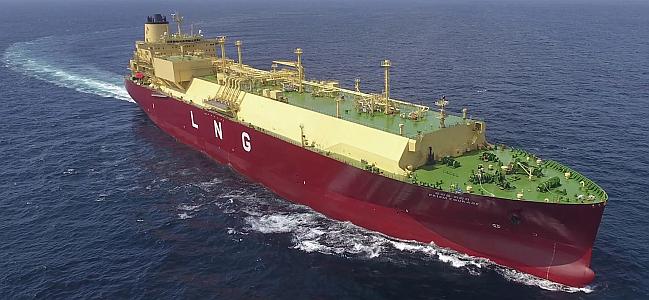 Earlier this month, the 180,000 cubic meter ultra-large LNG carrier Prism Courage completed a voyage from the Gulf of Mexico to South Korea using a semi-autonomous navigation system developed by HD Hyundai subsidiary Avikus.
Earlier this month, the 180,000 cubic meter ultra-large LNG carrier Prism Courage completed a voyage from the Gulf of Mexico to South Korea using a semi-autonomous navigation system developed by HD Hyundai subsidiary Avikus.
Delivered to South Korea’s SK Shipping last year by shipbuilder Hyundai Heavy Industries, Prism Courage, arrived at the Boryeong LNG Terminal in South Korea from the Freeport LNG terminal, Texas, via the Panama Canal, after completing a 33-day voyage.
The ship is equipped with the HiNAS 2.0, Level 2 (Hyundai intelligent Navigation Assistant System) autonomous navigation solution developed by Avikus, and sailed half of the roughly 20,000 kilometers voyage utilizing the HiNAS 2.0 autonomous navigation technology.
In the ocean crossing, the Prism Courage, equipped with HiNAS 2.0, was operated autonomously on the optimal routes, increasing the fuel efficiency by around 7 percent while reducing greenhouse gas emissions by about 5 percent. Also, the system accurately recognized the locations of nearby ships during operation to avoid collision over 100 times.
This voyage was conducted under real-time monitoring of the American Bureau of Shipping (ABS) and the Korea Register of Shipping (KR) to verify the performance and stability of the technology. Avikus plans to commercialize HiNAS 2.0 within this year after receiving a certification from ABS for the results of this self-propelled ocean crossing.
Thanks to David Rye for contributing to this post.

LNG tankers are making natural gas a fungible commodity, & weaning Europe off of Russian natural gas
What is semi-autonomous? If it had autopilot steering to waypoints, ais and radar proximity alarms does that qualify? In which case my sailing boat is semi autonomous 🙂
Ship propulsion, steam turbine or diesel? (Year built 2021)
Recent[when?] advances in technology reliquefication plants to be fitted to vessels, allowing the boil off to be reliquefied and returned to the tanks. Because of this, the vessels’ operators and builders have been able to contemplate the use of more efficient slow-speed diesel engines (previously most LNG carriers have been steam turbine-powered). Exceptions are the LNG carrier Havfru (built as Venator in 1973), which originally had dual fuel diesel engines, and its sister-ship Century (built as Lucian in 1974), also built with dual fuel gas turbines before being converted to a diesel engine system in 1982.[citation needed]
Vessels using Dual or Tri-Fuel Diesel Electric, respectively DFDE/TFDE, propulsion systems are now in service.[citation needed]
Recently, there has been interest in a return to propulsion by boil-off gas. This is a result of the IMO 2020 anti-pollution regulation that bans the use of marine fuel oil with a sulphur content greater than 0.5% on ships not fitted with flue-gas scrubbing plant. Space constraints and safety issues typically prevent the installation of such equipment on LNG carriers, forcing them to abandon the use of the lower-cost, high-sulphur fuel oil and switch to low-sulphur fuels that cost more and are in shorter supply. In these circumstances, boil-off gas may become a more attractive option.[21]
@ws There is an interesting article on FPSO here https://www.maritime-executive.com/editorials/seven-key-environmental-challenges-for-fpsos